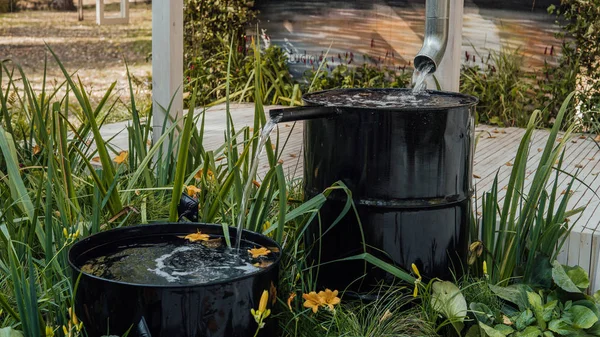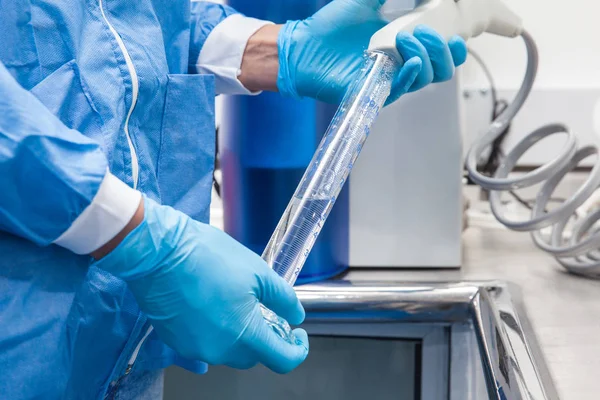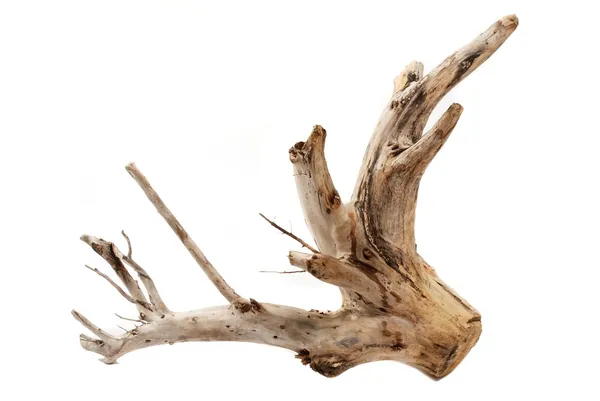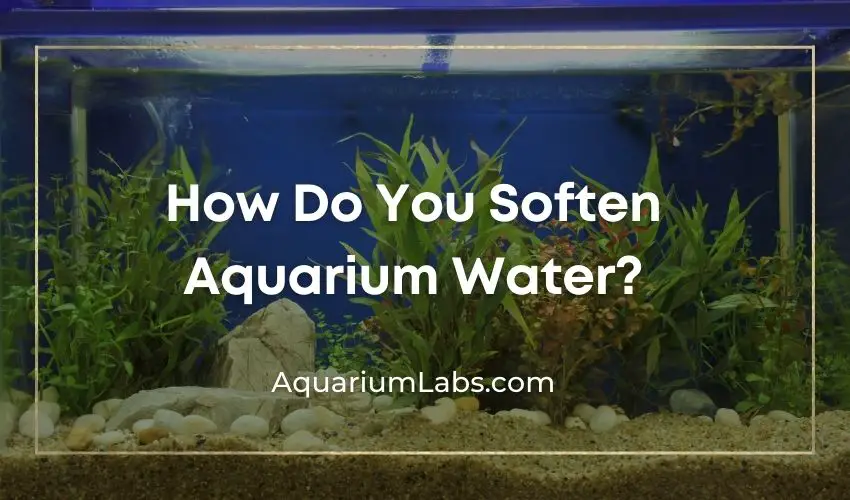Carbonate and magnesium ions are naturally occurring mineral content in water. These minerals affect the aquarium water hardness.
Water hardness in a fish tank is a parameter that must be considered carefully if your aquarium fish is to have access to great water quality. Softening hard water is a great way to ensure water quality for these soft water fish.
Although there is a lot to know about softening aquarium water, rainwater is the easiest and most natural method to soften water for aquarium use.
But, how to soften aquarium water? There are many other ways to soften tank water. This article discusses them all in detail.
What Is Water Hardness
Water hardness is the total amount of dissolved magnesium and calcium in a water volume. It is usually rendered as the concentration of calcium carbonate (CaCO3).
Water is hard when it is high in dissolved minerals, especially calcium and, to a lesser extent: magnesium. Other minerals usually present in the water may include iron and manganese.
You will notice the concentration of dissolved minerals in water when the water leaves a slimy film of chalky deposit on your hand after washing with soap. Hard water also leaves unsightly residues on glass containers, as you may have noticed with your aquariums.
On the other hand, soft water is water with negligible or no amount of dissolved mineral content. This means that when your water is soft, it has a low concentration of dissolved mineral contents.
The higher the concentration of the dissolved minerals in the water, the harder the water will be. There are many reasons for water hardness. These include the location and the source of the water.
Hard water typically has a higher pH level than soft water, which usually has a lower pH level. But the minerals in hard water act as a buffer to prevent the acidification of the water in your aquarium.
Measuring Water Hardness
There are two ways to determine water hardness. These are GH and K. They are also known as the degree of general hardness (GH) and carbonate hardness (KH). They are often used interchangeably, and this inaccurate way of using them often leads hobbyists into confusion.
Here is a quick explanation for both.
General Hardness (GH)
The general hardness of water is the measure of the concentration of calcium and magnesium per volume of water in your aquarium. It is also known as the degree of general hardness.
General hardness also tells if your aquarium has enough minerals and salts to sustain the biological functions of aquatic life.
Carbonate Hardness (KH)/Alkalinity
Carbonate hardness, also known as the degree of carbonate hardness, measures the concentration of carbonate and bicarbonate ions per volume of water in the aquarium.
There is always some kind of confusion because both can be rendered as parts per million (ppm). This table below illustrates how they measure different things:
| Hardness (GH) | Hardness (KH) | |
|---|---|---|
| Measurement Unit | Degree of General Hardness or Parts per Million (PPM) | Degree of Carbonate Hardness or Parts per Million (PPM) |
| Degree Equivalent | 1 dGH = 17.84ppm or 0.01g of Calcium Oxide per Liter of Water | 1 dKH = 17.86ppm or 0.01786g of Calcium Carbonate per Liter of Water |
Testing for General Hardness and Carbonate Hardness
You need an aquarium test kit to test for either of the water hardness parameters you wish to test.
But the aquarium test kits to use will depend on whether you are testing for the degree of general hardness or carbonate hardness.
- Testing for General Hardness (GH). You need a general water hardness test kit like the Aqua Care Pro 18 test strips 6 in 1 to measure general hardness. The test kits will indicate how much dissolved calcium and magnesium are in your water.
- A reading in the range of 0-8 dGH means that you have soft water, while higher values in the range of 9-12 and above indicate that you have hard water.
- Testing for Carbonate Hardness (KH)Alkalinity (Carbonate hardness) tests require the use of a carbonate hardness test kit like the Aqua Care Pro 18 test strips 6 in 1.
- This test measures the level of alkalinity in the water. Alkalinity is directly linked to its capacity to cushion the variations in the water pH level.A low KH value indicates that the water is vulnerable to risky sudden changes in the pH levels, while a high KH value means that the water’s resistance to sudden pH variations has increased. However, a KH value of 4.5dKH means that you must pay more than usual attention to the pH level.
| Water Condition | Saltwater Aquariums | Freshwater Aquariums |
|---|---|---|
| General Hardness | 8-12 dGH | 4-8 dGH |
| Carbonate Hardness (Alkalinity) | 8-12 dKH | 4-8 dKH |
Determining Your Tap Water Hardness Level
Water hardness is a very crucial aquarium water parameter. While aquarium fish may tolerate slight changes with other parameters, drastic changes in water hardness level could occasion serious health issues since aquarium fish are accustomed to the water conditions of their natural habitats.
Natural water bodies increase in general hardness and alkalinity as water washes pass rocks such as limestone and other rocks containing calcium and magnesium.
The increase is sometimes also spiked when the water passes a limestone deposit in the soil. This means that your tap water may be too hard to use directly in your aquarium upon reaching your home, depending on your location.
However, here is an easy guide to help you determine how hard your water is when you get your water hardness test result.
| Water Hardness Level | Ranges of General Hardness (dGH) | Ranges of Carbonate Hardness/Alkalinity (dKH) |
|---|---|---|
| Extremely Soft | 0-4 dGH | 0-4 dKH |
| Soft | 4-8 dGH | 5-7 dKH |
| Slightly/Barely Hard | 8-12 dGH | 7-8 dKH |
| Moderately Hard | 12-18 dGH | 9-12 dKH |
| Hard | 18-30 dGH | 13-20 dKH |
| Extremely Hard | > 30 dGH | > 20 dKH |
How To Soften Aquarium Water With These Water Softening Methods
Use a Reverse Osmosis Unit
You can soften aquarium water with a reverse osmosis unit. This unit uses reverse osmosis, a water purification process for demineralizing water.
The procedure entails forcing the water through a semi-permeable membrane filtration unit to eliminate the water’s mineral content and other impurities.
While the purification process aims to filter out the contaminants in the water, such as large particles and sediments like dirt, salt, and chlorine, eliminating the ions in the water naturally softens the water.
But RO water leaves you with pure water that has zero hardness. So you have to mix the filtered water with some dechlorinated tap water to restore minimal measures of some of the crucial minerals needed in the aquarium.
The benefit of the reverse osmosis system is that its effectiveness is not limited to small fish tanks only. You can use it for small tanks, but it would be particularly helpful for larger tanks.
You can check out the iSpring RCC7.
Peat Moss
Peat moss is dried decomposed moss. It is also called Sphagnum moss and is used for softening tank water because of its natural ability to soften water.
Peat moss softens aquarium water by releasing gallic and tannic acid into the aquarium water to neutralize the carbonate compounds in the aquarium water. This leads to a decrease in the water’s hardness and pH level.
Before using peat moss, it would be best to boil the peat moss for about an hour to decontaminate it.
You can also decontaminate the peat moss by soaking it in a bucket of water for about 3-4 days. After decontaminating the peat moss, you may use it to soften aquarium water in any of these ways:
- Using peat moss to soften the water before use in the aquarium.
You can soften tap water with peat moss before using it in the aquarium. To do this, you have to place the already decontaminated peat moss inside small mesh bags.
After that, leave the filter bags containing the already decontaminated peat moss in the bucket of water you want to soften. Test the degree of general hardness and pH level every 10-12 hours until you get the target water hardness level.
You can use the softened water in your aquarium or add it to the aquarium when you do your water changes.
- Putting it inside the aquarium filter and using it as peat moss filters in a filter media.
Put the already decontaminated peat moss in small sized mesh bags and seal the bags. Leave the peat moss bag in the aquarium filter to serve as a filter bag.
It would be best to put the mesh bags containing the decontaminated peat moss between the filter pad and the charcoal media. This will ensure more effectiveness.
- Using the peat moss as a substrate.
Using peat moss as a substrate is another effective way to soften aquarium water. You do not need to have them in a filter bag for this process.
After decontaminating the peat moss, you can simply spread them on the aquarium floor.
Since they are very fluffy and can be moved by curious fish or the water flow in the aquarium, it would be best to have another substrate on them to firmly hold them down.
You can use gravel or sand as the additional substrate. Apart from firmly holding the peat moss down, this other substrate will also check the possibility of having anaerobic pockets that will facilitate the growth of harmful bacteria.
Rainwater
Rainwater is naturally soft as a result of the water cycle. The sun heats water from rivers and lakes, causing it to evaporate.
The water turns into vapors and rises into the air to form clouds by condensation. The clouds eventually break apart to form rainfall or precipitation, so properly called.
The rainfall washes into the ground to mix with the minerals in the soil, and the sun heats the water again to repeat the process.

The water vapors that rise through the air to form clouds and later rain usually contain almost no mineral content. This is why the water that falls from the skies as rain is mineral content free.
Although it is not totally mineral content free, the amount of mineral content in the water is usually a very negligible amount of the mineral content that must have been present in the water bodies where it must have evaporated from.
The evaporation process ensures that only pure water free of mineral content rises to form the cloud and later rain. This is why rainwater is usually soft.
You can soften aquarium water by using rainwater, but you have to be cautious with your rainwater harvesting method so that you do not endanger the health of your fish.
Ensure to follow these steps to make sure that your rainwater is safe for use in the aquarium:
- Collect rainwater in a large and clean container. This will limit the chances of introducing any harmful bacteria into your aquarium.
- Choose your container carefully. Containers marked “food grade” are better for collecting rainwater as they will not discharge chemicals into your rainwater.
- If you test the rainwater and notice that it is too soft for your aquarium water, you can mix it with some tap water to raise the water hardness level to your desired level. Ensure to use only dechlorinated tap water for the safety of your fish.
The location where you are collecting the rainwater matters. Collecting rainwater in an industrial area is not ideal. The rainwater is highly likely to be contaminated by the poor air quality and high pollution levels prevailing in the area.
Distilled Water

You can soften aquarium water by diluting the tap water with distilled water. Distilled water is completely mineral-free.
The process of distilling water is similar to the natural process of the water cycle. The water is boiled, and the vapors are condensed and collected into a liquid state.
Distilled water is mineral-free because the vapors leave the minerals and other impurities behind, like in the natural water cycle.
But if you want to use distilled water, you must dilute it with some dechlorinated tapwater. You have to partially mix tap water with the distilled water to do this.
This is important because the distillation process removes more than 99.9% of all the minerals and other impurities in the water. You want to increase the general hardness of the distilled water by adding some dechlorinated tap water to make it conducive for your aquarium fish.
Use Driftwood

You can find driftwood on the shores of lakes and other water bodies. It contains tannins and softens the aquarium water by releasing tannic acid to neutralize the carbonate compounds in the aquarium water.
Store-bought driftwood is a better choice than sourcing driftwood from the wild as the stores often cure and prepare them so they are safe for your aquarium.
But whether store-bought or wild-sought driftwood, you want to do the following to make them safe for use in your aquarium:
Ensure that the driftwood is completely dry.
Remove the grime around the driftwood, especially if you sourced yours from nature. You can do this with a moderately damp toothbrush and a screwdriver for the crevices.
Sand the driftwood to enhance its beauty.
Wash the driftwood with water with a pressure washer. Do not use a detergent or soap as this will be toxic to the aquatic life in your aquarium.
Ensure that the pressure is not too low to leave it unclean or too high to crack or strip the wood.
Sterilize the driftwood by dousing a piece of cloth in vinegar or hydrogen peroxide and using it to wipe all the parts of the wood, including the crevices.
You can also do this by either boiling, baking, or bleaching the driftwood. Cover the driftwood with foil and leave it in the oven for about 2-4 hours at 200 to 215 degrees to sterilize by baking.
The final step to preparing your driftwood is curing. You would need to cure the driftwood to make sure it sinks when introduced into the aquarium.
Check out the pros and cons of using driftwood below:
| Advantages | Disadvantages |
|---|---|
| Releases tannic acids into the water to soften it. | Browns aquarium water for a while. |
| Tannins are not toxic to fish. | Can introduce parasites and harmful bacteria if not decontaminated properly. |
| Tannins can improve fish’s immune system to protect them against fungal infections. | Must be monitored closely for fungal growth especially if the aquarium has poor aeration. |
Related: Why Is Driftwood Expensive?
Water Softening Pillows
Water softening pillows are a special type of chemical filtration media consisting of ion exchange resins. They are typically pouches full of ionized resins. You can place these pouches in your aquarium filter (related: where to place your filter).
Water softener pillows absorb soluble heavy metal ions from your aquarium water, including calcium and magnesium.
This absorption lowers the hardness of the water as it removes the mineral contents in the aquarium water.
The ion exchange resins have no harmful effect on your fish or the aquatic plants in your aquarium. Also, you will no longer experience the crusty white residue that is typical of hard water in aquariums.
But the effectiveness of this method is also limited to small aquariums, especially anything around 25 gallons and below.
Additionally, they need to be frequently recharged if they must retain their efficacy. You have to soak the softener pillows in brine for 2-4 hours.
Using this method for larger tanks would be time-consuming as you would have to recharge almost too frequently to keep the pillows effective.
Importance of Softening Aquarium Water
There is almost no room for flexibility with water parameters like salinity, nitrate level, and pH. Aquarium fish will experience stress and other health complications if these water parameters are not properly fixed.
But water hardness is one of the few water parameters aquarium fish have learned to cope with in terms of slight differences. However, here are some compelling reasons to soften aquarium water if you keep soft water fish species.
Prevent Hard Water Stain and Limescale Deposit
Hard water leaves unappealing residues on the walls of your glass aquariums, as you may have noticed.
This residue is called limescale build-up. It is usually a hard and chalky deposit or residue that builds up where hard water is left standing for a long time.
This residue or deposits can present aesthetic issues, especially when you leave scrub marks on the glass in an attempt to remove the residues.
You will hardly have these issues when you soften aquarium water before using it in the fish tank.
Protect Your Fish Equipment From Malfunctioning
Aquarium equipment such as canister filters, air pumps, LED lights in the fish tank, powerheads, etc., tend to last longer in soft water than in hard water.
One noteworthy reason for this is that they are naturally protected from limescale buildup since the water in the aquarium is soft. The chances of a buildup deposit interfering with the functioning of these systems are significantly eliminated.
Breeding Soft Water Fish Species
Although soft water fish species may survive in hard water, breeding for soft water species is only largely possible in soft water that is slightly acidic with the optimal temperatures.
So if you have soft water species and want to encourage breeding, it would be best to reduce the hardness in the aquarium water even though they can survive in it.
You want to also acclimatize the breeding pair to the new water parameters before introducing them to the breeding tank. This will prevent any stress shock due to a rapid change in the different water conditions.
Soft Water and Hard Water Fish Species
Soft Water Fish Species/Fish Species That Thrive in Soft Water
These soft water fish species are usually found within water bodies that flow over low mineral soil. Here is a list of some for which you want to ensure that you soften the water in your fish tank.
| Soft Water Fish Species | Range of General Hardness |
|---|---|
| Tetras | 2-10 dGH |
| Ram Cichlids | 3-6 dGH |
| Angelfish | 3-8 dGH |
| Discus | 3-8 dGH |
| Barbs | 3-10 dGH |
| Cory Catfish | 3-10 dGH |
| Apistogramma Dwarf Cichlids | 3-12 dGH |
| Rasboras (Only Some) | 4-12 dGH |
| Guramis (Only Some) | 5-12 dGH |
Hard Water Fish Species
If you cannot keep up with the extra cost, care, and requirements of keeping soft water fish species, here are some fish species that love and flourish in hard water.
| Hard Water Fish Species | Range of General Hardness |
|---|---|
| Paradise Fish | 5-30 dGH |
| Guppy Fish | 8-12 dGH |
| Mono Fish | 8-14 dGH |
| Platy Fish | 10-28 dGH |
| Swordtail Fish | 12-35 dGH |
| Molly Fish | 15-30 dGH |
| Archerfish | 20-30 dGH |
Final Thoughts
Water softening pillows are also great, but their effectiveness is limited to small tanks. Softening tank water with an RO system would be a wise and better investment if you have a larger capacity tank.
But remember that you would have to remineralize the water with some magnesium and calcium ions to restore a measure of the vital minerals.
Follow these steps on how to soften aquarium water, and you will improve your aquarium water quality for your fish, especially your pet fish that prefers softer water.
Related Reading:

source https://aquariumlabs.com/how-to-soften-aquarium-water/


